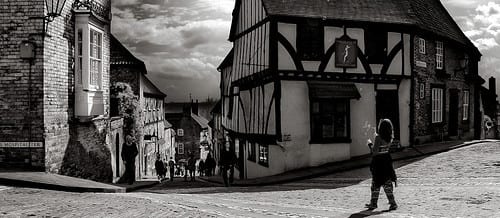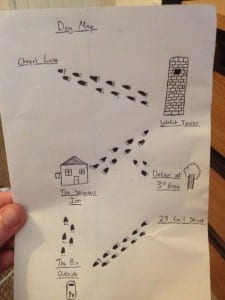Yesterday was an interesting day in our site specific module as the tasks varied from interpreting everyday signs to a short misguide. Yet the most enjoyable and creative for me was designing an unconventional map. Me and my friend Jamie have explored the ideas of incorperating animals such as dogs and cats into our performance and try to understand the complexities of ownership as well as equality. For my map I decided to find someone who was walking their dog and see where went and follow them noting each passing landmark that they pass (as well as the odd bush or particularly interesting bin). Yet in doing this, I found myself asking the question why are these particular buildings considered landmarks or places of note? Why aren’t trees bushes or bins held in the same reverence? So I read ‘The Place of the Artist’ and particular passage about ‘rich’ and ‘poor’ sites intrigued me. I understand Govan et al’s point of view when he says that there are “places which are rich in history and non-places which he see’s as soulless, alienating places with only functional value such as airports and motorways” (Govan et al, 2007, p.121). However, I disagree with this as I believe that value is personal whereas history is ever changing and coincidental and that what we see in the landscapes we walk across, a lot of what catches our eye is not particularly valuable or historic yet still sparks our interest. Is Primark a particularly historic place, I’d argue it is entirely functional yet this is as much a site as anywhere else because of what Primark represents i.e. Cheap Capitalism, Disposable Income and Recession.
As for the misguides and maps/guided tours, I found them interesting and the interpretation of our landscape at the top of steep hill varied wildly from grizzly murders to gateways to Narnia. However, I still believe that a performance is what I plan to do at the end of this module and I’m looking forward to learning new things next week and challenging my own views as well as challenging the readings.
Govan, E. Nicholson, H. Normington, K. (2007) Making a performance: Devising Histories and contemporary practises. Oxon: Routledge.

